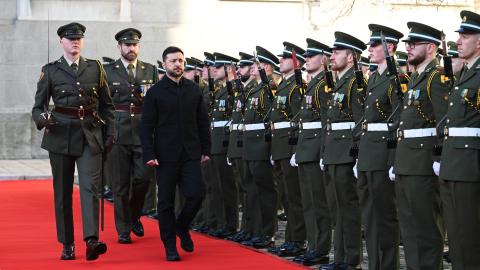It is hard to come up with a more heart-rending subject than children with AIDS. Locate the sick kids in the developing world and things get even grimmer. For those reasons alone "In a Rocket Made of Ice" might have been one of the saddest stories every told. Instead, it is an interesting and often uplifting one. In describing how a handful of volunteers care for and comfort the sick and dying, it also offers universal lessons in compassion.
The book is based on the personal journal of Gail Gutradt, an American who has worked over the years as an on-again, off-again volunteer at a tiny orphanage in rural Cambodia called Wat Opot. A wat is a Buddhist temple; more than a decade ago, the monks of Wat Opot donated five acres for a community to provide palliative care for people who were dying of AIDS.
Wayne Matthysse, an American Christian, and Vadin San, a Cambodian Buddhist, founded the Wat Opot Project. It began as a hospice for the dying and has grown into a community for about 100 children whose lives have been affected by AIDS. Ms. Gutradt calls it "a workshop for souls."
All of the children at Wat Opot have lost at least one parent to AIDS. Some were abandoned by surviving family members who were either unable to care for them or didn't want to, usually because they were afraid of contagion. Many of the children are themselves infected with the AIDS virus; others are healthy. In the early years, most of the infected children at Wat Opot died.
Today many live to adulthood thanks to antiretroviral drugs, which, if taken correctly, will prolong their lives. The rhythm of the orphanage is set by the drug regimen, with the children lining up at the clinic at 7 a.m. and then again 12 hours later for their daily doses.
Another feature of life at Wat Opot is the brief memorial service that is held every evening at the community's crematorium. The service includes Buddhist chants along with a Christian prayer. This ritual is in keeping with Wayne Matthysse's wish to focus on the "spiritual." He does not proselytize his Christian faith, a decision that prompted one church in the U.S. to stop sending money to the orphanage.
The children are comforted by the memorial service, Ms. Gutradt says, which helps them preserve their connection to a parent, sibling or friend who loved them. The walls of the crematorium chapel are lined with photographs of the dead, under which are placed little brass urns containing their ashes. Children point to the photos and "introduce" their loved ones to newcomers. The service is "the spiritual core of our days," Ms. Gutradt writes.
Much of "In a Rocket Made of Ice"—the title alludes to one boy's cheeky suggestion for how to fly to the sun—is devoted to personality sketches of the many children the author has met and grown to love at Wat Opot. The stories are enhanced by numerous photos taken by the author and scattered throughout the volume.
A typical story is that of a 6-year-old girl with AIDS who was dropped off at Wat Opot by her two older sisters after their parents died of the illness. The sisters, who were not infected, "realized that a promising young man, a good prospect, would have no interest in marrying a woman with a sickly younger sister infected with AIDS," Ms. Gutradt explains. At Wat Opot, the girl will receive medical care, a sense of family and, in the author's words, an opportunity to experience "the joy of living" even though she may be dying.
Some people need to travel far from home to find their calling, and Ms. Gutradt appears to be one of them. She declares herself a "seeker" and includes herself in a group of volunteers who do not feel "comfortable in our home cultures."
We know she rejected the Judaism of her youth, lives most of the time in Maine, survived breast cancer, and was 60 years old and childless when she first went to Wat Opot. The single section of the book in which she discusses herself at any length—it's about her stay at an ashram along the Ganges in India—is tediously New Age-ish, and her passing remarks on U.S. military spending, global warming and Big Pharma are less than edifying.
When the focus is on Wat Opot, however, and her relationships with the children, she writes sensitively, sometimes lyrically. She describes the emotional difficulty of forming attachments to those who may be dying but concludes: "In the end, to shut our hearts would bring us to an untimely and tragic death-in-life." She also describes the "sense of uselessness" she felt before she began her work in Cambodia and how she prayed "for seva, as the Hindus call selfless service, for something outside of myself and my problems, some way I might do something for someone else, even a very small something."
As director of the community, Wayne Matthysse is a constant presence that binds together both Wat Opot and Ms. Gutradt's narrative. He is a complicated man with a highly individualistic moral sense. He calls himself a "follower of Jesus" but comes to reject the label "Christian" because of un-Christian-like behavior he has seen in others of that faith. He served as a Marine medic in the Vietnam War, where he witnessed the deaths of two children. He considers his work at Wat Opot atonement for failing to try to prevent those deaths even though it would have meant disobeying the orders of his commanding officer.
"In a Rocket Made of Ice" concludes on an up-note, with stories of children who are now in their teens or early 20s. Wayne is helping them obtain educations, find jobs and learn to live "on the outside," separate from their Wat Opot family. Compared with the early days of the orphanage, when two or three children were dying every week, these are welcome challenges to have to face.














